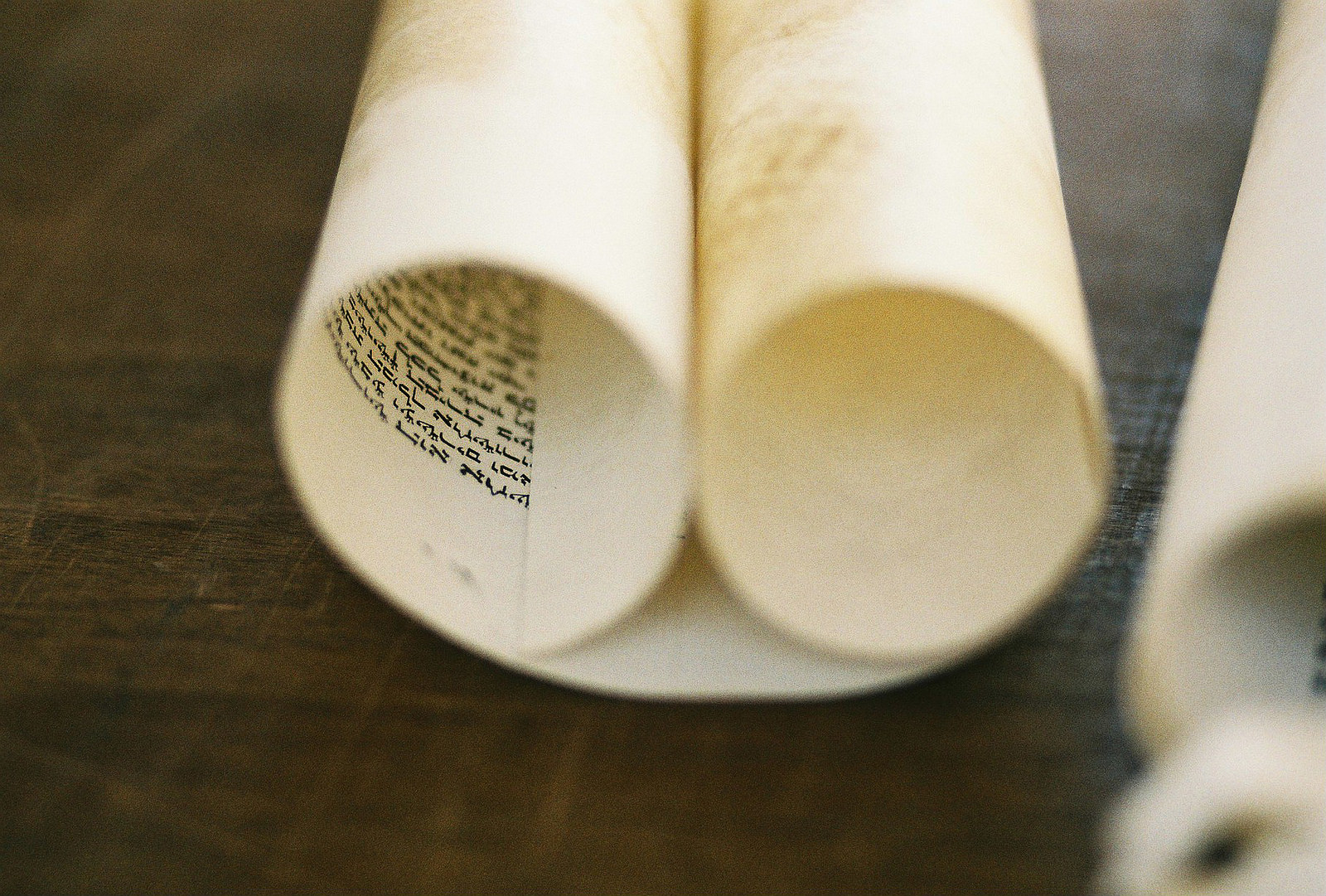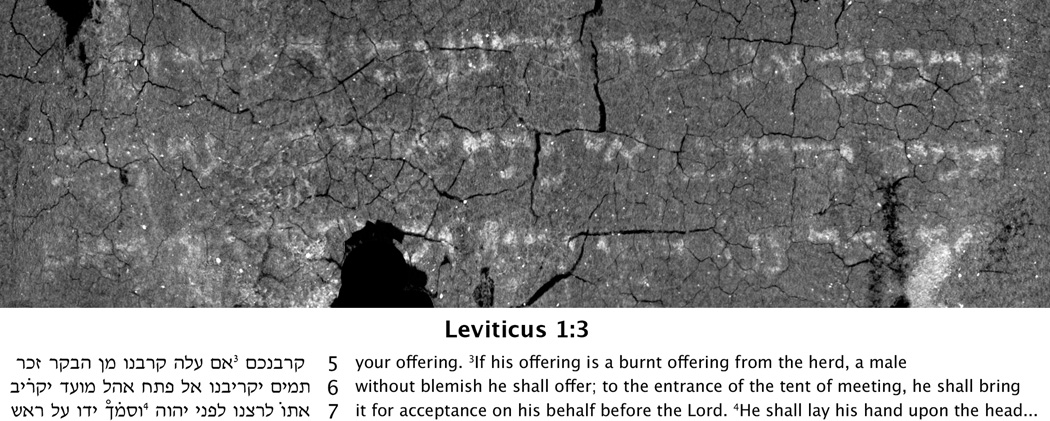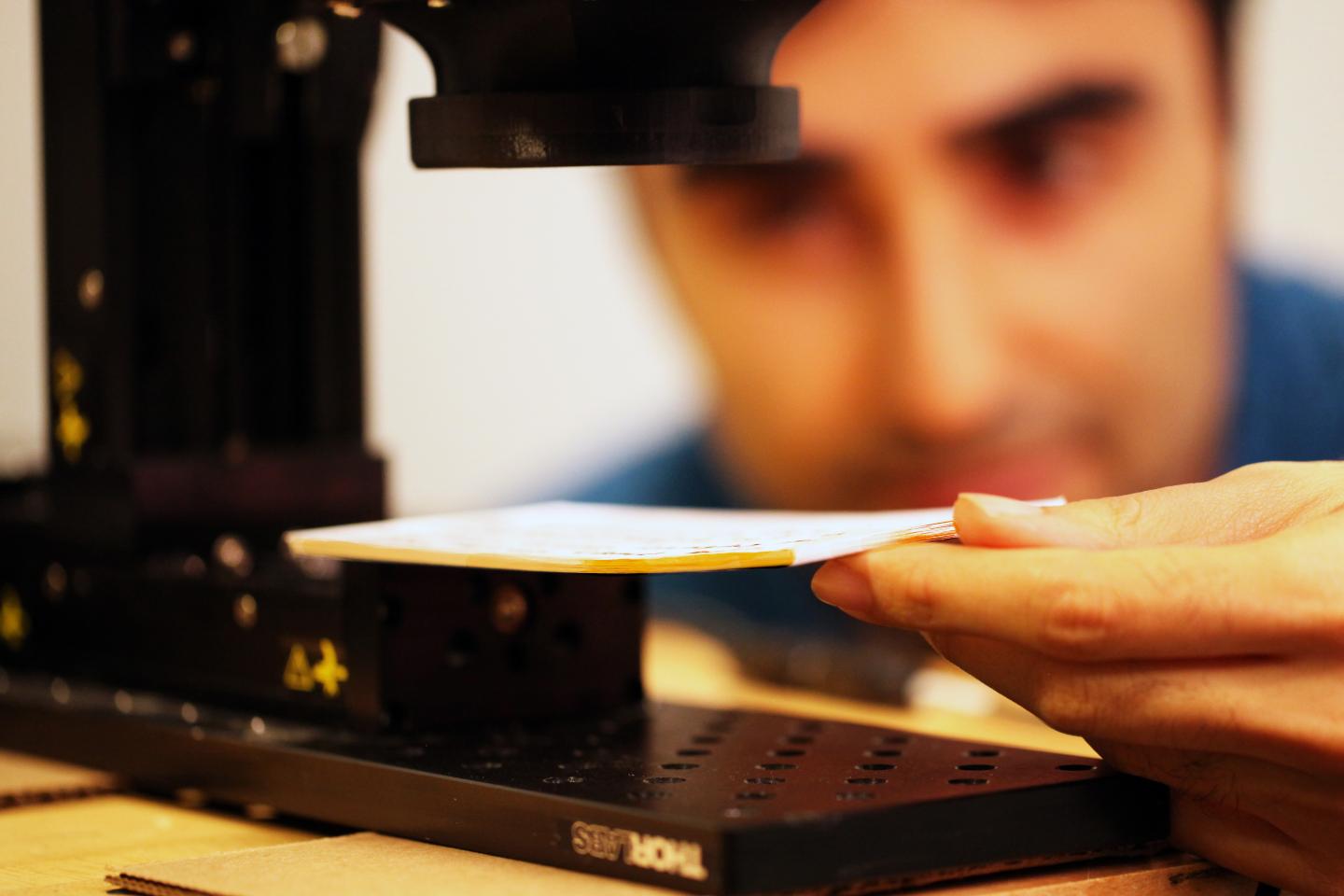Examining Hidden Text in a New Light
January 13, 2017
Thousands of years from now, when archeologists unearth the remains of modern civilization, chances are they will focus on our devices. After all, an unbelievable amount of daily life is managed by computers and stored on hard drives and servers—from economic transactions to health records and population data. But like a cassette tape without a player, the challenge will be whether that information can be extracted in a meaningful way.
In a way, that challenge isn’t too different from one that modern-day archeologists are facing. In ancient times, the storage medium of choice was the scroll, a roll of paper-like material made from plants or animal skin. Scrolls can consist of one long piece of paper or multiple pages glued together at the ends. They can be rolled up or rolled around two wooden rollers.

Scroll.
Image Credit: Jun (CC BY-SA 2.0)
Like the ancient equivalent of modern computers, scrolls are rich in economic, cultural, and religious material. One of the best ways to create a successful future is to learn from the past, and ancient writing is a unique window into our history as a species. However, the window can become pretty foggy when it’s buried for 1,500 years. In fact, many scrolls are impossible to unroll without destroying, and even if you can unroll one, the ink fades quickly on contact with air.
To the uncreative, reading such a scroll might seem like a lost cause. However, like a floppy disc in need of a drive, many ancient texts can be read with the right technology. By bringing together cutting-edge imaging techniques and advanced computer programs, scientists have recently been able to virtually unroll scrolls in new ways.
Like reading a book without turning the pages, to unroll a scroll you need to be able to differentiate the ink from the paper and associate each ink marking with the appropriate page, or layer, of the roll. Piece-by-piece, you can then patch together the images of each layer.
Reading the En-Gedi Scroll with X-rays
One scientist earnestly attacking this challenge is Brent Seales, a computer scientist at the University of Kentucky. Seales and his team developed a sophisticated computer program for virtually unwrapping scrolls. In 2016, they had the unique chance to put it work on the En-Gedi scroll, the oldest Hebrew scroll ever found with the exception of the Dead Sea Scrolls. Written on animal skin, the scroll looks like a piece of charcoal after falling victim to a fire sometime in its history. Thanks to this innovative program, we now know that it contains the Biblical text of Leviticus and dates back to around 600 AD.

Partial transcription and translation of the recovered En-Gedi text.
Image Credit: Seales et al. (CC BY-NC 4.0)
To virtually unwind the scroll, the first step was performing a computed tomography (CT) scan of the scroll. This technique is useful for “seeing” the interior structure of an object without cutting it open. The object (or the patient, when CT is used medically) sits between an X-ray source and a detector. The source sends X-rays through the object. Different materials absorb X-rays differently, so by measuring the X-rays that make it through each location, you can recreate a 2D picture of that interior structure. During a CT scan, X-ray images of the object are taken from many different angles. When combined, they form a kind of 3D map.
Seales’s computer program doesn’t require a CT scan per se, but it does require some kind of scan that shows the internal structure of an object. The better the quality of the scan, the better the odds are of uncovering the text. Once the scan is ready, the original object can be put away for good.
After the scan, the computer program and operator begin analyzing the image. The first step is identifying and modeling the layers through a complicated process that looks at the details of small subsections of each layer. Next, the program uses differences in contrast to differentiate ink from paper. Since scrolls are rolled up, the images must then be flattened, or processed so that they show the writing as it would appear if the scroll was unrolled. Finally, the images of different sections are combined into one master image. Results on the En-Gedi scroll were incredible, revealing a significant portion of text that is now available for scholars to study. This work was published in the journal Science Advances in September 2016.
Reading a Closed Book with Terahertz Imaging
A team led by Massachusetts Institute of Technology scientists is taking another approach to revealing hidden text, and recently used their new approach to “read” nine pages of a book without opening it. Their process is based on terahertz imaging instead of X-ray imaging. Terahertz radiation is less energetic than X-rays, falling between microwave and infrared light on the electromagnetic spectrum. Recently it has gained attention for being able to “see through” materials that don’t conduct electricity, which you can read about in this Physics Buzz post.

MIT researchers and their colleagues are designing an imaging system that can read closed books.
Image Credit: Courtesy of Barmak Heshmat (CC BY-NC-ND 3.0)
The “reading” process works like this: A source sends terahertz pulses into the book. The radiation is partially reflected each time it hits an air pocket between two pages. These reflections travel back to a detector where the time is precisely recorded. Using the speed of the pulse and the time it takes reflections to travel back to the detector, the program is able to distinguish between the layers of paper.
Next, the team used a technique that also relies on how terahertz radiation is affected by materials to differentiate ink from the paper on the basis of their composition. Finally, a computer program examines the contrast and shape of the text and sorts it all out so that the right text appears on the right page.
This technique is still being refined, but the team anticipates that it could be applied to ancient books too fragile to open and other artifacts as well. As technology improves so that we can measure smaller and smaller differences in the arrival time of terahertz pulses, the quality of the images should get better and better. This work was published in September 2016 in the journal Nature Communications.
Merging Past and Present with Light
As these stories illustrate, in some cases cutting-edge technology is the key to revealing our history—even if it’s written with ink on paper. There is a common thread to these solutions though: light. Sometimes when challenges keep us from seeing something with visible light, we just need to look at the problem in a different kind of light. (Pun intended.)
—Kendra Redmond














